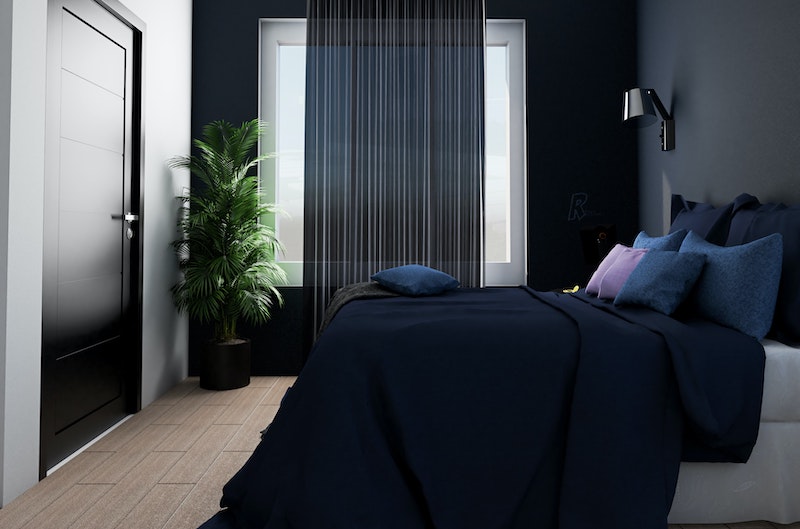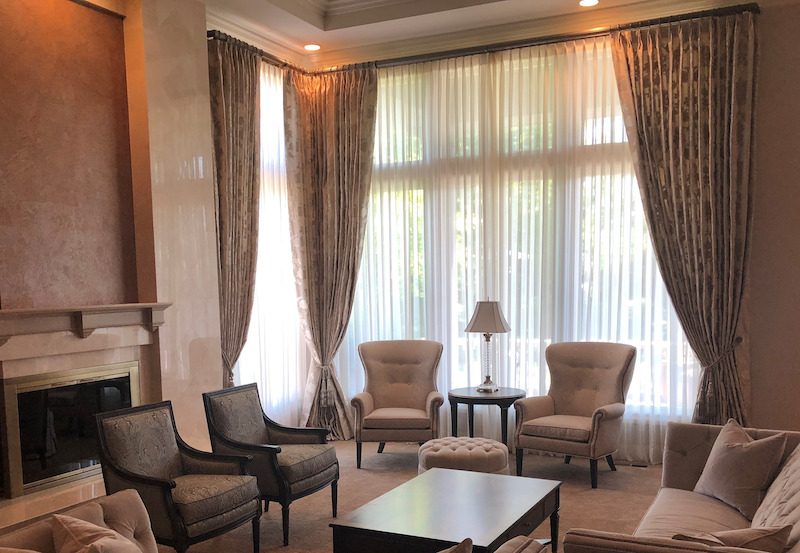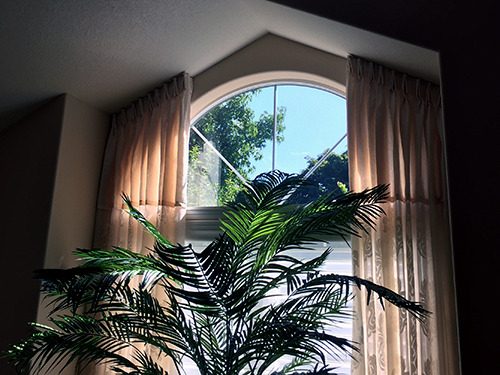The long and short of it is, choosing the right curtains — style, material, and size — and knowing how to hang them correctly is tricky.
Start with this guide. We’ve compiled a list of the most common curtain questions we hear from customers. We’re also happy to answer all your questions at our Tigard showroom or through a quick virtual consultation.
How long should my curtains be?
A good rule of thumb is for your curtains to break anywhere from a ¼” to ½” from the floor, similar to a break in pant legs on your shoe. This adds the custom element of luxury while actively holding your curtains in place.
If you want your curtains to move back and forth, you will want them to hang about ½” above the floor to avoid added friction to the open and close movement.
There are exceptions. Choosing the length of your curtains can also depend on the style of the room, window size, and style and your house. Longer curtains with a break of over 1” offer a more dressy, formal look while shorter imply a casual and relaxed vibe.
Can I use long curtains on short windows?
Keep in mind that in a small room curtains could potentially overwhelm the space. In this case, fabric valances or Roman shades may be the better choice.

How high should you hang curtains?

How much wider should curtains be than the window?
As you’re ordering curtain panels, measure your window. You typically want curtains that are pleated down from fabric that is 2 1/2 times the width of your window. For sheer, flowy curtain fabrics, you may want the pleated width to be 3 times the window width to achieve the proper fullness.
What curtains are best for narrow windows?
Should you use curtains on a wall of windows?

What is the best fabric for curtains?
It takes a designer’s eye (or a lot of your own research) to choose the perfect curtain fabric for a space. A good place to start is by understanding the different types of curtain fabrics, which include:
- Linen
- Cotton
- Velvet
- Silk
- Polyester
- Blackout or light-dimming curtains
Should your curtains match your walls and couch?
A best practice is to choose curtains that are at least one shade lighter or darker than your walls and to consider what furniture pieces will be placed in front of your window treatment. If your couch has a pattern, you might try a solid-color curtain in a contrasting color that enhances the fabric design. A patterned fabric can create a focal point in the room and is especially lovely when used with leather upholstery.
Consider coordinating with the permanent colors in your space such as tile work, moldings, and flooring. If you coordinate with these elements your drapery can have a life as long as they are present in your space. Matching the permanent elements will allow your curtains to work even as you change minor items such as paint and pillows.
How to pick the right curtains

Even with all this information on hand, bringing it all together to find the right curtain size, material, style, and color is hard. It’s why so many people end up working with a designer. Having a professional opinion and a fresh perspective on what will look and function best in your home is a relief and leads to the best outcomes.
If you want to get started on your own and see how it goes, focus first on finding curtains that blend with the style of your home and meet your needs. Take time to consider:
- The window shape
- The room’s color scheme
- The overall style of your home (decorative, modern, mid-century, minimalistic, traditional, etc.)
- Whether the same curtain design will look good throughout your whole home or if you need to choose curtains room-by-room
- Any special privacy needs (do you need blackout curtains or can you get away with something more sheer?)
Once you have the basic answers to these questions, you’ll feel much more comfortable browsing curtain options (or working with a window treatment expert) to find the perfect solution.
More questions about curtains? We have answers

Don’t let the process of picking curtains intimidate you. It’s okay to get professional help where you need it. If you have more questions about choosing curtains, contact us. Our team of expert windows specialists are here to assist you!
We offer many ways to help with your project:
- Virtual consultation to evaluate your space and windows and help you choose the right curtain
- Virtual showroom tours where we’ll show you around the different window covering solutions we carry
- Visit our Tigard showroom in person
- Schedule an in-home consultation
And of course, we’re always here to answer your phone call at (503) 783-1838.
Good luck with your curtains and we hope to hear from you soon!

